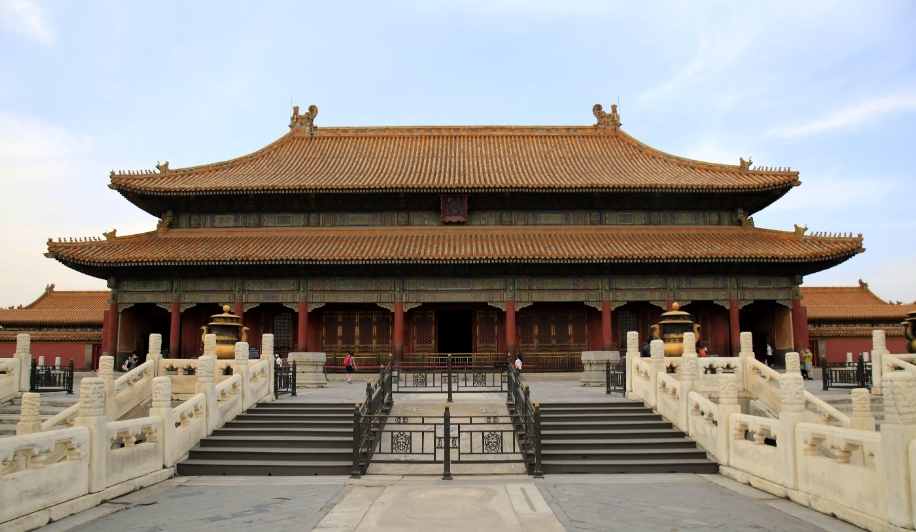
The Forbidden City: China's Secret Palace
The Forbidden City, a sprawling imperial palace complex nestled in the heart of Beijing (formerly Peking), China, stands as a testament to the grandeur and power of the Ming and Qing dynasties. More than just a palace, it served as the epicenter of Chinese political and cultural life for nearly 500 years.
Construction and Layout:
Commissioned in 1406 by the ambitious Yongle Emperor, the third ruler of the Ming dynasty, the Forbidden City's construction was a monumental undertaking. It involved the labor of over a million skilled artisans, laborers, and soldiers, who meticulously crafted its intricate design and imposing structures. Completed in 1420, the palace complex boasts 980 surviving buildings, encompassing an area of 72 hectares (180 acres), and is meticulously organized according to principles of traditional Chinese cosmology and urban planning.
The Forbidden City is laid out along a perfect north-south axis, reflecting the ancient Chinese belief that the emperor was the "Son of Heaven" and his throne was aligned with the celestial north pole. The complex is divided into two main sections: the Outer Court and the Inner Court.
-
The Outer Court: This southern portion housed the emperor's administrative offices and ceremonial spaces, where he conducted grand audiences, received foreign dignitaries, and held court ceremonies. The Hall of Supreme Harmony, the largest structure in the Forbidden City, stands majestically on a three-tiered marble terrace within the Outer Court. It served as the stage for significant state events, such as coronations, imperial weddings, and pronouncements of new emperors.
-
The Inner Court: Located in the northern section, the Inner Court provided a more intimate setting for the emperor, his family, and their servants. This area contained the emperor's private living quarters, such as the Palace of Heavenly Purity, the Hall of Union, and the Palace of Earthly Tranquility. Lush gardens, tranquil courtyards, and smaller palaces dot the Inner Court, offering moments of serenity amidst the formality of imperial life.
A City Within a City:
True to its name, the Forbidden City was much more than a palace – it was a self-contained city within a city. High walls, a wide moat, and heavily guarded gates restricted access, ensuring the emperor's safety and reinforcing his authority. Inside its walls lived not only the imperial family but also thousands of eunuchs, concubines, servants, guards, and artisans who catered to their every need.
The Name "Forbidden City":
The name "Forbidden City" (紫禁城, Zǐjìnchéng in Mandarin) reflects the strict access restrictions imposed on the complex. Ordinary citizens were forbidden from entering without special permission, and even high-ranking officials could only enter certain areas with explicit authorization. This seclusion aimed to protect the emperor and his court, fostering an aura of mystery and power surrounding the imperial family.
From Imperial Residence to Museum:
The Forbidden City served as the seat of imperial power until 1912, when the last emperor of China, Puyi, abdicated the throne, marking the end of the Qing dynasty. After the fall of the empire, the palace complex underwent a period of transition. In 1925, it was converted into the Palace Museum, opening its doors to the public and allowing people from all walks of life to marvel at its architectural wonders and historical significance.
Today, the Forbidden City stands as a UNESCO World Heritage site and one of China's most popular tourist destinations. It offers a captivating glimpse into the country's imperial past, preserving the legacy of the Ming and Qing dynasties and showcasing the brilliance of traditional Chinese architecture and craftsmanship.
Q&A:
1. Why was the Forbidden City built?
The Forbidden City was built by the Yongle Emperor to serve as the new capital of the Ming dynasty and a symbol of his power and authority. Its construction reflected the emperor's ambition to create a grand and imposing center for his reign.
2. What is the significance of the Forbidden City's layout?
The Forbidden City's north-south axis alignment and division into Outer and Inner courts reflect traditional Chinese beliefs about cosmology, hierarchy, and the emperor's place in the universe.
3. What can visitors expect to see at the Forbidden City today?
Today, visitors to the Forbidden City can explore its impressive architecture, including grand halls, ornate temples, serene gardens, and numerous courtyards. The Palace Museum also houses a vast collection of art and artifacts from the Ming and Qing dynasties, providing insights into the lives and culture of the imperial court.
note: This return of all, without the author's permission, may not be reproduced